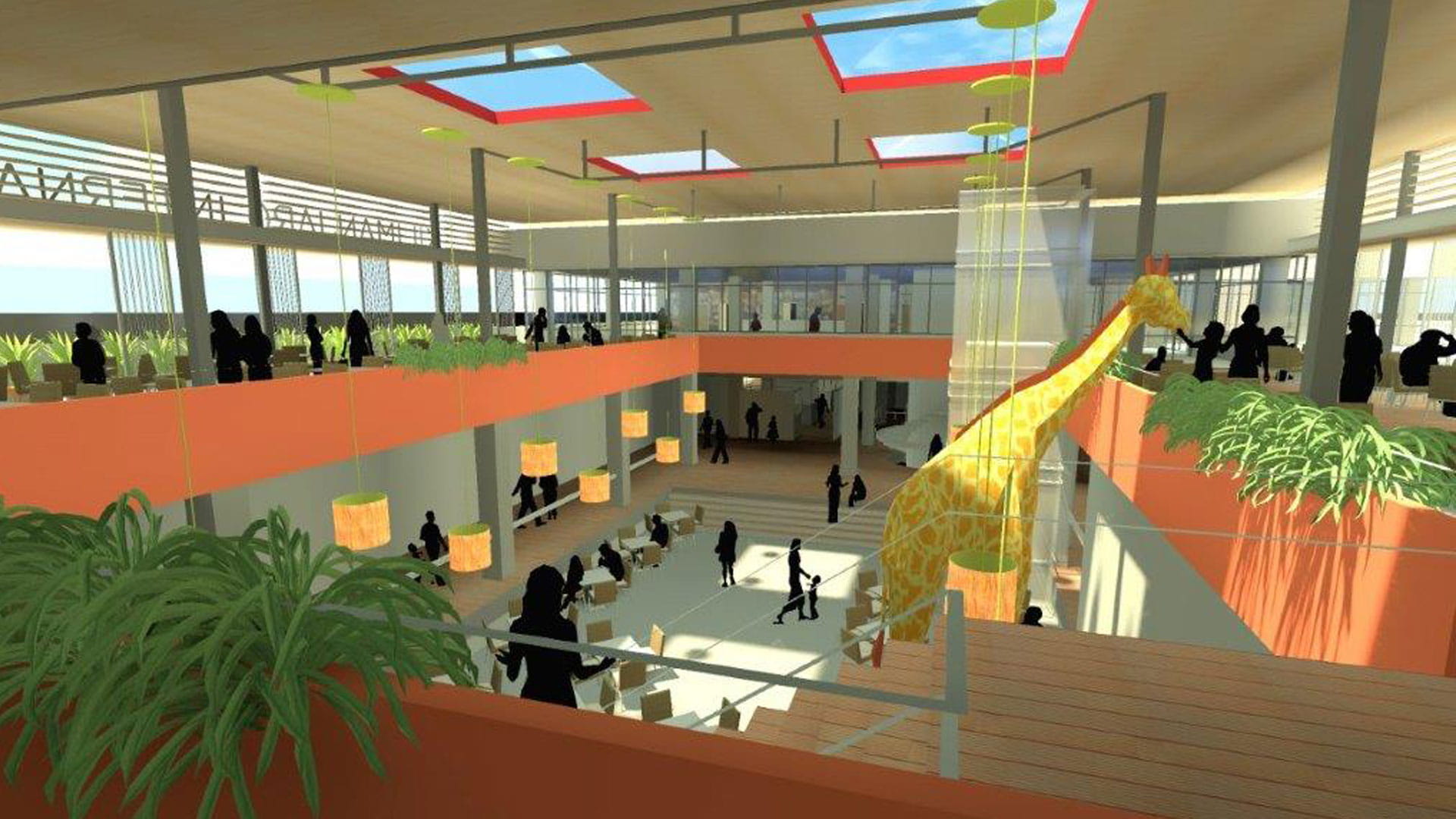Safeguarding heritage through innovation to upgrade Kilimanjaro International Airport

Project results
Increased runway safety and capacity
Maintaining sense of place by preserving original architecture without compromising the passenger experience
Adaptation to local climate requirements to accommodate significant rainfall and bolster climate resilience
Project result
Kilimanjaro in Tanzania is one of East Africa’s most popular tourist destinations – with the Serengeti National Park, Ngorongoro Crater and the snow-capped Mount Kilimanjaro all situated nearby. Kilimanjaro International Airport is driven by international tourism to these iconic sites – serving almost 80% of all tourists visiting Tanzania. But having been built in the 1970s, its ability to accommodate increasing passenger numbers – the airport served over 800,000 passengers in 2014, well beyond its 600,000 capacity – and enable the economic growth of the region had begun to strain.
Understanding the need to rehabilitate their airport, improving infrastructure and optimising the passenger experience for a new era of air travel, KADCO sought NACO’s expertise. Our local presence in Africa means that we can provide world-class, global aviation expertise with the innate understanding of the local context to tailor the solutions and enhance this tourism gateway to East Africa. Our track record of projects on the continent offered valuable insight and in-depth understanding of needs and requirements.
The airport masterplan – unlocking growth and development
The NACO team came on board at the early stages of the project and worked in close collaboration with the airport throughout the project. Central to revitalising the airport was the need to build and improve upon the existing infrastructure. Our team set out to create an airport masterplan with three core goals:
- Increase capacity and safety – to futureproof the airport
- Improve the passenger experience
- Boost commercial revenues
The masterplan we created not only set out the foundation for upgrading the airport – demonstrating the feasibility of the project to the project funders – but also presented the most sustainable way to enable future development and growth.
With a strong foundation of a comprehensive design and tender documents created by our team, the client requested that we carry out the design review, contract administration and construction supervision of the development.
Stepping into the future – while preserving heritage
The existing airport infrastructure posed several challenges to development. The passenger terminal, built in the 1970s, had charm and character in its architecture, and would need extensive reinvention and expansion to be able to handle increasing international traffic. Alongside this, the passenger and security experiences had room for improvement – to enable passengers to destress and enjoy the terminal’s amenities. With a desire to maintain the original architecture where possible, our team developed a more sustainable approach that would incorporate it into an upgraded passenger terminal, with a new commercial lounge space and rooftop terrace.Considering the local climate and weather conditions – all while proposing the most efficient design – the team created a louver system that kept the lounge space open, providing natural ventilation and limiting the use of air conditioning. The existing courtyard was covered as well, to maximise available space while keeping it cool, refreshing and comfortable for passengers waiting in the lounge area.
Safe, sustainable design
To bolster the passenger experience further, a centralised security process was incorporated into our design. Instead of performing their last security step at the gate, passengers could now complete all security procedures in one go. The solution not only enhanced security but also gave passengers peace of mind to relax and enjoy the lounge and retail areas without having to think about further checks – offering improved commercial revenues and boosting the airport’s non-core revenue streams. This safety extended to the airside improvements envisioned in the masterplan, which included a rehabilitation of the existing apron and the creation of additional parking stands. With well-designed manoeuvring, the risk of accidents is reduced, and operational efficiency improved – increasing the overall safety of the airport. Finally, the runway surface was rehabilitated, and its capacity was increased via a new partial parallel taxiway that created an additional entrance and exit – reducing runway occupancy. "As a result, we have been able to expand our capacity, improve safety and security, maximise revenues and strengthen our position as an important aviation hub to Northern Corridor."NACO’s expertise and insight were crucial to ensuring the positive growth and development of our airport. Their ability to understand our specific needs, combined with the world-class sustainable and innovative solutions that they bring was hugely valuable.
Forming Kilimanjaro’s aviation future
The result of our work in Kilimanjaro is an airport ready for the aviation of today and tomorrow. As Africa’s aviation sector continues to grow and both domestic and international travel increases, Kilimanjaro International Airport will be ready to welcome passengers and serve as a tourism gateway to Tanzania, East Africa and beyond.
By working on solutions that are in keeping with existing architecture and local climates – we can enable airports like Kilimanjaro International Airport to deliver a better passenger experience, greater efficiency and sustainability – all while celebrating the uniqueness of local culture and community.